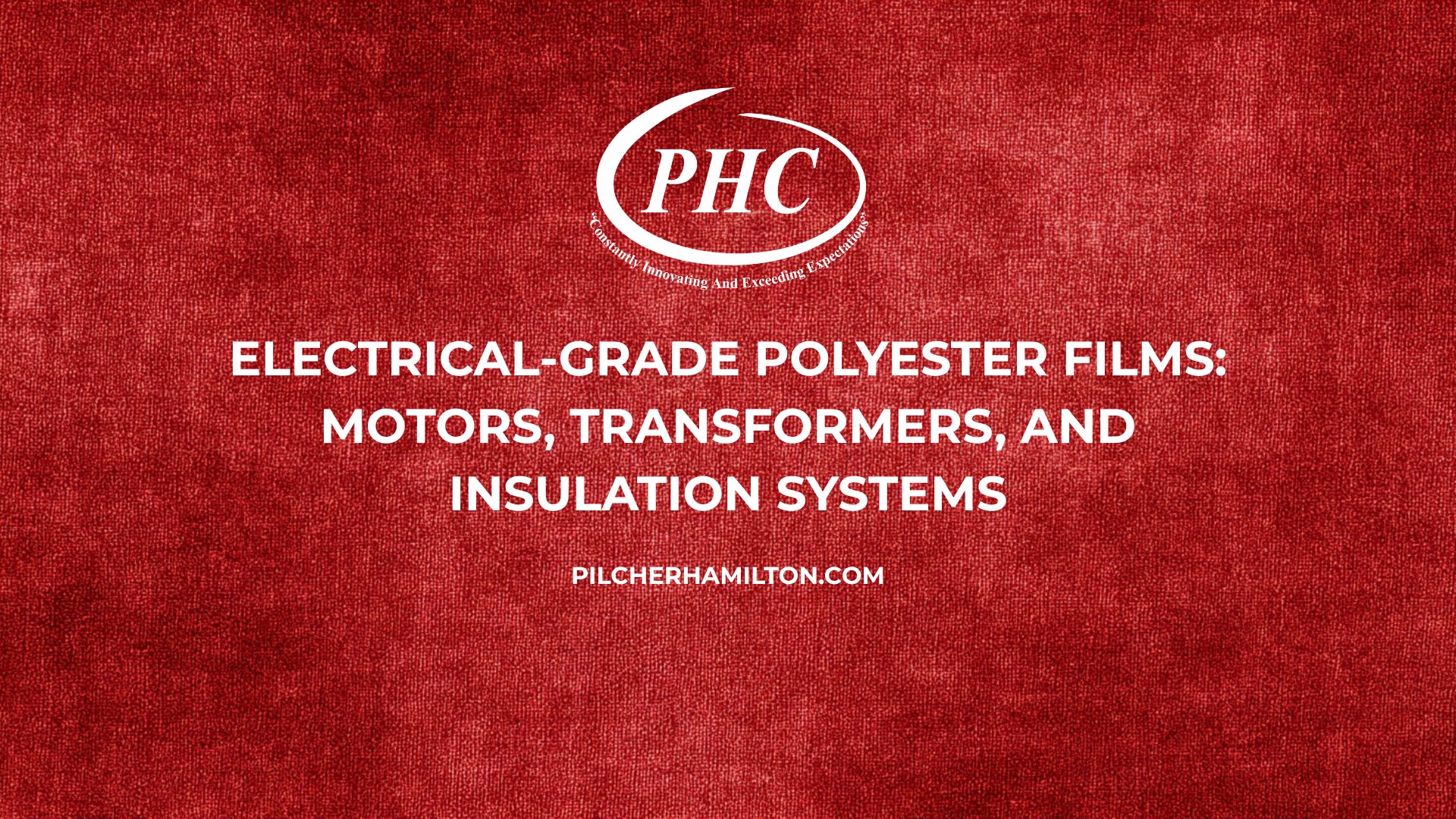When electrical engineers search for “polyester near me” with motor coils and transformers in mind, they need more than generic packaging film. Electrical‑grade polyester films—often branded under familiar names like Mylar—combine high dielectric strength, thermal resistance and dimensional stability. PET films gain these properties through biaxial orientation during manufacture, aligning polymer chains for strength. Because they resist chemicals and remain dimensionally stable over a wide temperature range, these films are ideal for slot liners, phase insulation and coil wrap. This article explains key considerations when specifying electrical‑grade PET, including thickness, dielectric breakdown, shrinkage and converting services.
Key Takeaways
- High dielectric strength – Electrical‑grade PET films provide dielectric breakdown voltages of 8–12 kV per mil, supporting insulation up to 180 °C.
- Thermal classes – Grades are available for Class B (130 °C) and Class F (155 °C) motor insulation systems, with higher‑temperature options available.
- Dimensional stability – Biaxially oriented PET offers low shrinkage (<2 %) and high tensile strength, maintaining slot liner dimensions under load.
- Precision converting – PHC slits and sheets electrical PET to exact widths and lengths with burr‑free edges for automated insertion.
- Traceability and certification – Lot numbers, UL certification and technical datasheets ensure compliance for regulated equipment.
What Defines Electrical‑Grade PET?
Electrical polyester films differ from packaging grades in critical ways. They are thicker—commonly 2 mil (50 µm) up to 10 mil (250 µm)—and must exhibit high dielectric strength and thermal endurance. Dielectric breakdown voltage increases with thickness and typically ranges from 8 kV/mil to 12 kV/mil. Thermal classification aligns with insulation system requirements: Class B films operate up to 130 °C, while Class F and H grades handle 155 °C and 180 °C, respectively. These films also feature low shrinkage (≤2 % at 150 °C) and tight thickness tolerances (±0.1 mil) to ensure uniform dielectric gaps.
Thermal & Dielectric Considerations
In motors and transformers, insulation must withstand both temperature and voltage stresses. PET’s intrinsic thermal stability and mechanical strength come from the alignment of polymer chains during biaxial orientation. For Class F systems, films must retain at least 90 % of tensile strength after ageing at 155 °C. Dielectric strength is tested according to ASTM D149; typical 3 mil electrical PET exhibits 25–30 kV dielectric breakdown, while 5 mil film reaches 40–50 kV. Thicker gauges provide margin but reduce flexibility. Engineers balance dielectric requirements against space constraints and winding tightness.
Shrinkage & Dimensional Stability
Shrinkage can compromise insulation if liners pull away from iron laminations. Electrical PET films exhibit low heat shrink—often less than 1 % in both machine and transverse directions at 150 °C. Dimensional stability is further improved by heat‑setting during manufacture. Low shrinkage ensures the film maintains its thickness under winding tension and thermal cycling, preserving dielectric integrity and slot fit.
Converting for Motors & Transformers
To fit slot and phase insulation applications, PET rolls must be slit to widths from 3 mm up to several inches. PHC’s precision slitters maintain ±0.25 mm width tolerance with smooth edges to prevent arcing. For slot liners, sheeting machines produce flat pieces cut to length; dust‑free cutting and burr control are essential. Rolls are available on 3‑in or 6‑in cores with OD sized for high‑speed insertion machines. PHC can also emboss or punch indexing holes as required by automated insertion equipment.
Documentation & Datasheets
Electrical applications require evidence of compliance. PHC provides technical datasheets summarizing thickness, dielectric strength, tensile properties and thermal classification. Where UL recognition is required, PHC supplies certificates and lot traceability. Our UL-approved electrical films and technical datasheets pages contain detailed information.
| Parameter | Typical Range | Notes |
| Thickness | 2 – 10 mil | ±0.1 mil tolerance |
| Dielectric strength | 8–12 kV per mil | Increases with thickness |
| Thermal class | Class B, F, H | 130 °C, 155 °C, 180 °C |
| Shrinkage @150 °C | <2 % MD/TD | Ensures dimensional stability |
| Width tolerance | ±0.25 mm | Critical for slot liner fit |
FAQ
What thickness of PET film is used for slot liners? Electrical slot liners typically use 3–5 mil PET, balancing dielectric strength (≈25–40 kV) with flexibility for insertion.
How does electrical PET differ from standard packaging PET? Electrical grades have higher thickness, tighter tolerances, low shrinkage and higher thermal ratings. They are tested for dielectric breakdown and often hold UL approvals.
Is there a difference between Mylar and PET film? “Mylar” is a trade name often used to refer to biaxially oriented polyester (BOPET). Both terms describe PET film produced by stretching in both directions, yielding high tensile strength.
Where can I find polyester near me for motor insulation? PHC’s Greer facility stocks electrical PET films and can slit them to slot liner widths. Contact us to discuss thickness, thermal class and certification requirements.
What certifications are available? PHC can provide UL recognition numbers and technical datasheets for most electrical PET grades. Lot traceability ensures compliance with regulatory and customer specifications.
Call to Action
For OEMs and repair shops seeking reliable electrical insulation, Pilcher Hamilton Corporation offers a full line of electrical‑grade PET films. Our engineers will help specify thickness and thermal class, provide samples for slot insertion trials and ensure regulatory compliance. Learn more on our electrical insulating films page and explore our technical datasheets for detailed specifications. Let us be your polyester near me resource for motor and transformer insulation.
Serving the USA from Greer – South carolina
850 South Buncombe Road
Greer – South carolina
Need help? Visit our contact page or explore our locations for assistance.

